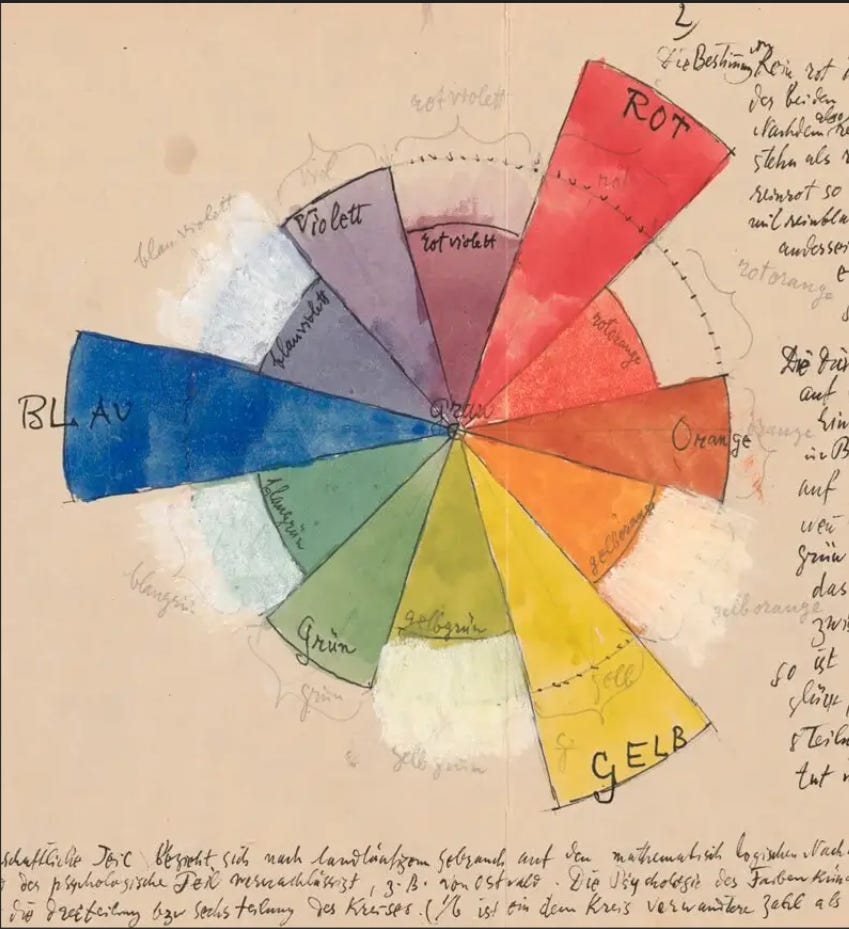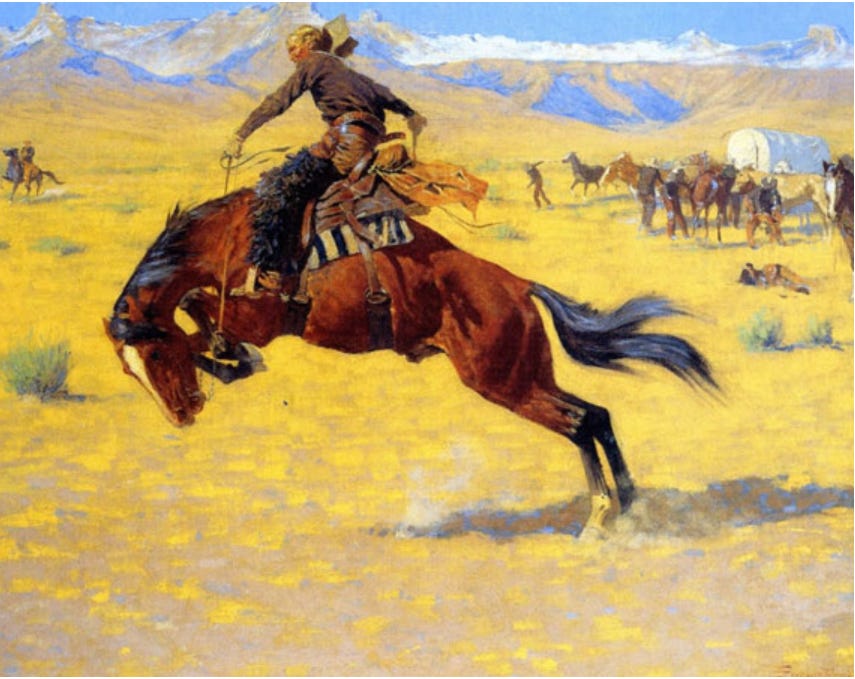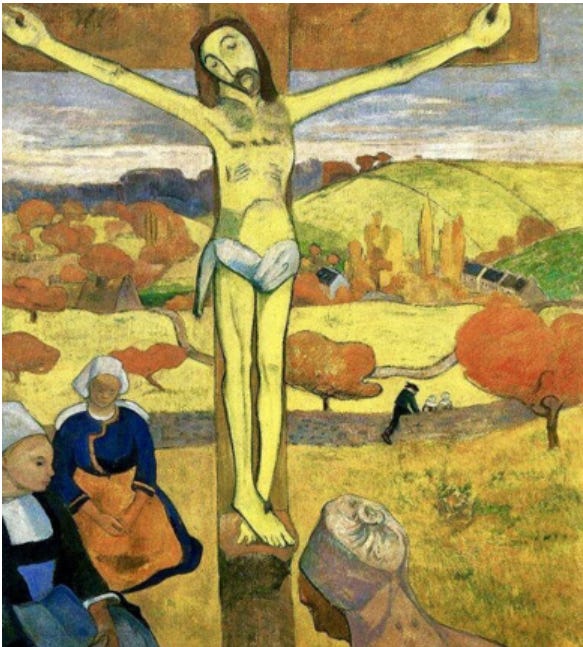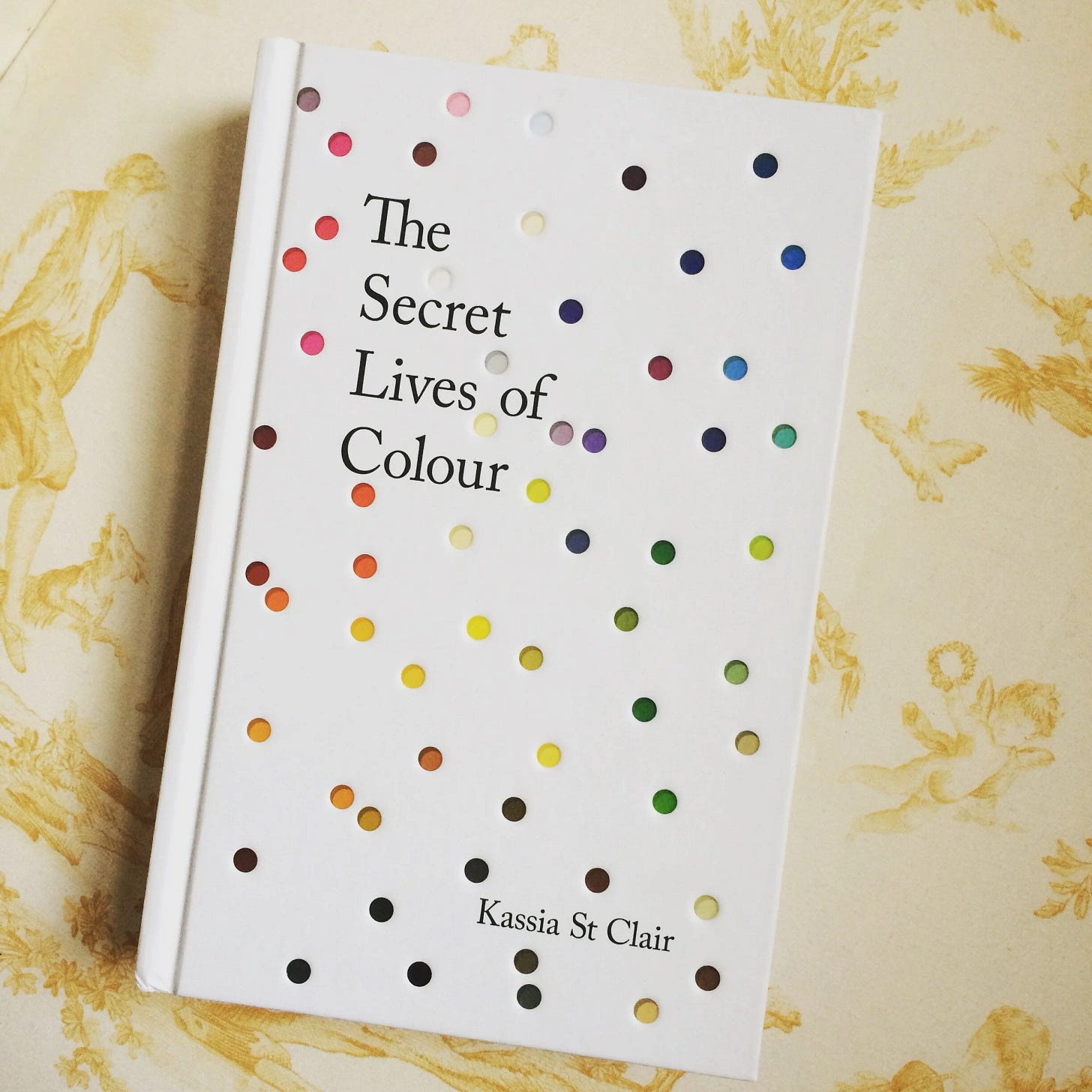This month our theme is colour. We artists are familiar with the subtractive colour wheel. This model helps us understand the relationship of colours and was popularised by Goethe in his Theory of Colours (Zur Farbenlehre), in contrast with Newton's objective approach based on light theory. The subtractive colour wheel uses yellow, red and blue primaries and applies to reflected light (from a painted surface for example), while the additive colour wheel uses red, green and blue primaries and works for projected light (as on a computer monitor for instance).
We'll look at some artists who have had obsessions with colour; sometimes a particular hue or combinations of colour repeated through their work, and look at colour placement and mixing strategies
We will focus on the colour yellow this week.
Yellow in art is a colour of contradictions—radiant and joyful, yet historically fraught with complexity. Today, we associate the colour with sunshine and cheerfulness but this has not always been the case. In the 1890's yellow was considered a symbol of immorality. Oscar Wilde was arrested carrying a yellow book which signified that it's content was, at the very least, questionable - the sort of publication bought at railway news stands often hidden in a brown paper bag!
Symbolism of Yellow
Joy & Optimism: Often associated with sunlight, yellow evokes warmth, happiness, and hope.
Intellect & Creativity: Psychologically, yellow stimulates mental activity, clarity, and imagination.
Caution & Betrayal: In Western art history, yellow has also symbolized jealousy, cowardice, and deceit—think of Judas often being depicted in yellow robes.
Divinity & Power: In many Asian cultures, yellow is sacred. In ancient China, it was the colour of emperors and spiritual authority.
Yellow Through Art History
Ancient Civilizations: Yellow ochre was one of the first pigments used in cave paintings, dating back over 17,000 years.
Egyptian Art: Gods were painted in yellow to resemble gold, symbolizing eternity and the divine.
Van Gogh’s Obsession: Vincent van Gogh famously used yellow to express emotional intensity and spiritual light — his Sunflowers and The Yellow House are iconic examples.
Toxic Beauty: Some yellow pigments, like orpiment and uranium yellow, were historically toxic—artists literally suffered for their art.
Consider where and how yellow is used in marketing and design – why do you think it has been chosen – what is it's impact.
Do you like yellow? Perhaps you have yellow clothes or furnishings in your home – how does it make you feel?
What yellow pigments do you have in your palette – why have you chosen them?
Some examples of strong use of yellow to consider...
Here are some exercises you might enjoy to help explore the colour yellow.
Sketchbook Challenge Options:
Mood Study: Use only yellows to convey five different emotions (e.g., joy, fear, envy, nostalgia, serenity).
Object Spotlight: Paint or sketch everyday objects—but only in yellows. Can you make a teacup, a city skyline, or a person glow with nothing but yellow?
Sunlight Stories: Capture different types of sunlight across 3 sketches: morning sun, evening sun, and artificial yellow light.
Texture Twist: Use mixed media (fabric, thread, found objects) all in yellow tones to create a tactile piece.
Van Gogh Reimagined: Pick a non-yellow painting by Van Gogh (or another artist) and recreate it (or a section of it) using only a yellow palette. It's difficult to adjust the tones!
Creative Constraint: Limit yourself to three yellow materials—like lemon yellow gouache, Naples yellow oil, and a mustard-tinted pencil. How far can you push variation and depth?
Learn about the fascinating stories of colour in The Secret Lives of Colour by Kassia St Clair – it's a fascinating read!








